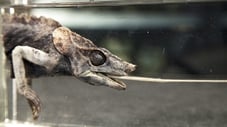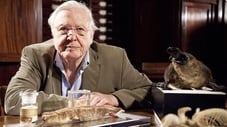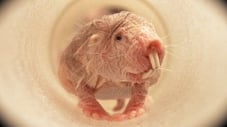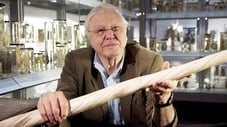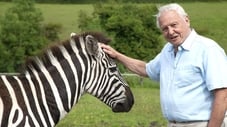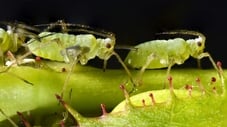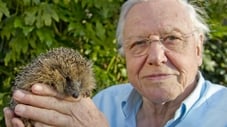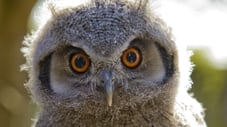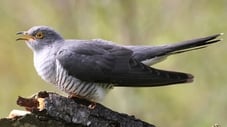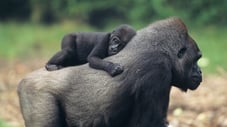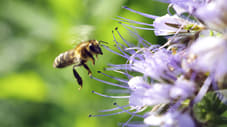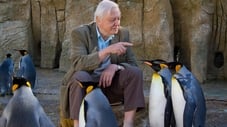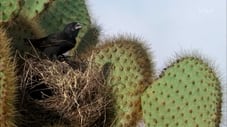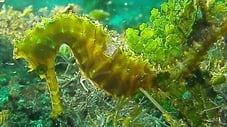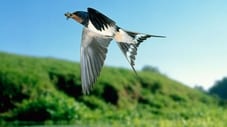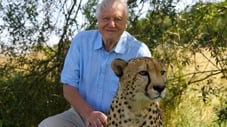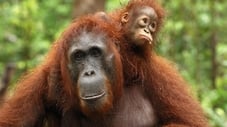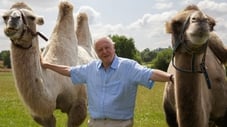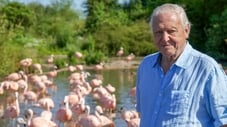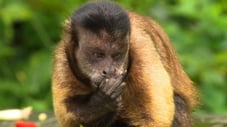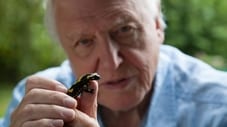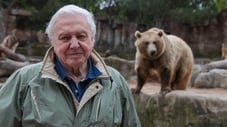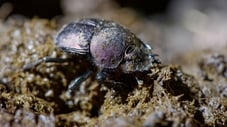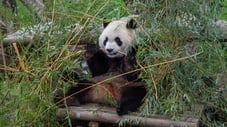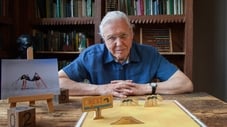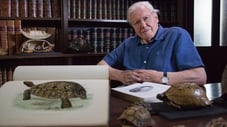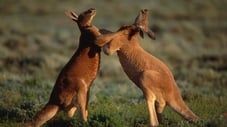
大卫·爱登堡的自然奇迹 (2013)
← Back to main
David Attenborough as Self - Presenter
Episodes 27
黑暗中的生活
Sir David Attenborough continues to shine the spotlight on nature's most amazing animals this time looking at the vision in squid and owls. Perhaps not a classic pairing, both owls and squid have incredible adaptations for being able to navigate at night.
Read More神奇的出现
"Magical Appearances" explores how swallows magically appear each spring and asks how did complex and beautiful insects like butterflies suddenly arrive in the summer.
The discovery of the swallow’s epic migration and the revelation that butterflies could metamorphose into totally different looking adults were scientific stories both cloaked in mystery and controversy.
Read MoreImpossible Feats
Fleas are supposed to be able to jump the equivalent of a human leaping over St. Paul’s Cathedral and cheetahs purportedly can clock speeds of 70 miles per hour. But are these claims really true? The discovery of the world's most elastic natural protein in insects and the development of a hi-tech tracking collar have helped reveal the truth. So can these creatures really achieve what should be physically impossible?
Read MoreCurious Minds
Orangutans can use tools but such skills remained undiscovered for centuries. They were considered as just clever mimics until discovery in remote Sumatran swamps revealed their true potential. Clever crows also make surprisingly sophisticated tools. How have the curious minds of these two animals helped them become so inventive?
Read MoreExpandable Bodies
The bodies of some animals stretch and shrink in extraordinary ways. The anaconda can swallow prey twice its own body size - and then wait for over a year until their next meal. The camel’s curious hump can almost double in weight giving it the energy to travel huge distances across deserts. What is the secret behind these expandable bodies?
Read MoreCurious Feeders
The blue whale and the flamingo both have bodies determined by their diet. Blue whales grow enormous by feeding on tiny shrimp-like creatures, while flamingos spend their lives eating with their heads upside down. Both are oddities in their own groups and yet both are curiously similar.
Read MoreCurious Cures
Humans are not alone in using medicines against injuries and infection. Some animals protect themselves with natural remedies in the most extraordinary ways. Hippos produce a blood-red “sweat” that acts as a sunblock and helps fight infections, while capuchin monkeys rub themselves with insect-repellent leaves to protect against insect bites.
Read MoreRemarkable Regeneration
Salamanders can regenerate entire legs and tails to replace ones they have lost, while deer shed their massive antlers and re-grow them from a few remaining cells each year. How do these creatures regenerate entire body parts and why is it not possible for all animals to do the same?
Read MoreAnimal Frankensteins
Hybrids can be bizarre and they can be deadly. We look at two hybrid animals that owe their existence to human interference – the pizzly bear (a cross between a polar bear and grizzly), which has come into being because of global warming, and the killer bee brought into existence because of the transfer of African bees to South America.
Read MoreFinding the Way
Some animals have an extraordinary ability to find their way. The dung beetle, an insect revered by ancient Egyptians, uses the sun, the moon and even the Milky Way to move its prized ball of dung in the right direction. Pigeons are often considered feeble birdbrains, but they have incredible memories that can recall several complex travel routes with amazing accuracy and they even use manmade roads and hedgerows to find the quickest way home.
Read MoreExtreme Babies
The giant panda gives birth to the smallest baby of any mammal and has to care for and protect it for many months. The kiwi lays one of the largest eggs in the bird world, which produces a very well developed chick. Why don’t pandas give birth to more developed, robust young and why do kiwis produce a single egg that is a quarter of its body mass and almost too big to lay?
Read MoreCurious Counters
Can animals count? This is a question that has intrigued and fooled investigators for a long time. Just over a hundred years ago, a German horse called Hans was declared a mathematical genius but all was not as it seemed. And strangely, some bamboos around the world flower exactly at the same no matter where they are – are they counting down the years?
Read MoreIncredible Shells
David Attenborough investigates two shells that have proved to be winners in evolution: the bird’s shell and the hard shell of the tortoise. The ostrich egg is so strong it’s possible for a person to stand on it without it breaking – how does the chick break out of this fortress? The evolution of the tortoise shell was for a long time a mystery and this bony box offers a lot more than just protection.
Read MoreFerocious Fighters
The Siamese Fighting Fish is so aggressive it will fight its own reflection until it is exhausted. Recent research shows that the fighting behaviour varies and depends on the personality of the fish! Male kangaroos were once pitted against humans in the boxing ring – the most impressive male kangaroos are solid blocks of muscle with a kick that can kill. Why do they fight and what skills must a winner have?
Read More